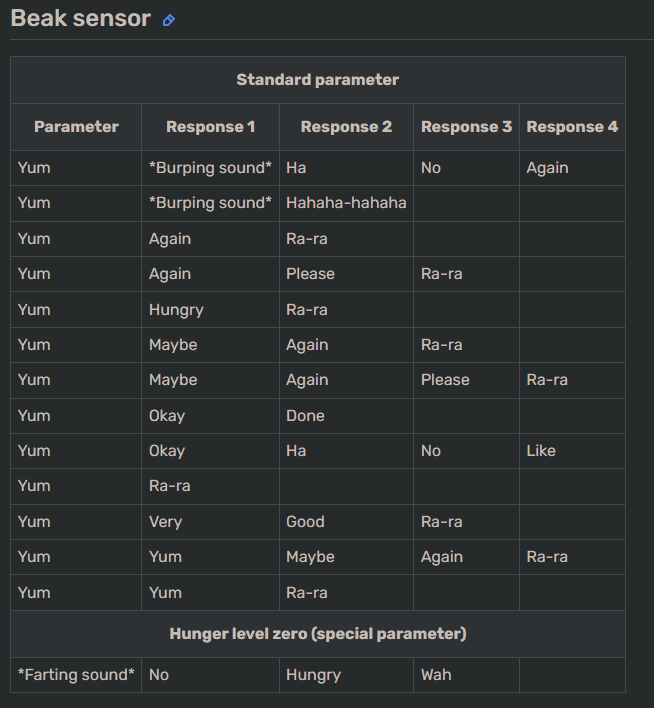created, & modified, =this.modified
tags:y2025toysaliensxenolingustics
Thought
This tidbit is amazing and made me need to look into this more
On January 13, 1999, it was reported the National Security Agency (NSA) of the United States banned Furbies from entering NSA’s property due to concerns that they may be used to record and repeat classified information, advising those that see any on NSA property to “contact their Staff Security Officer for guidance.” It was thought within the NSA that Furbies had an artificial intelligence chip that could “learn” from things the user said. The NSA theorized that if employees discussed confidential information around the toys, that information could later be repeated at a later date
The Furby is an electronic robot that resembles a hamster or owl-like creature.
Furbies were the first successful attempt to produce and sell a domestically aimed robot.
Gradually the Furbish language they speak turned into English.
Means of Communication
Furbies communicate with one another via an infrared port between their eyes.
The TSP50C04 chip from Texas Instruments, implementing the linear predictive coding codec, was used for voice synthesis.
Thought
The next fact is interesting, and can reflect on our interaction with speech to “non-thinking” entities. We are primed to belief in this myth. I remember the height of the Furby craze and can recall this myth. I wonder how much it was bolstered by marketing, and if some gaps/deceptions in that communication method caused this.
There was a common misconception that they repeated words that were said around them. This belief most likely stemmed from the fact that it is possible to have the Furby say certain pre-programmed words or phrases more often by petting it whenever it said these words. As a result of this myth, several intelligence agencies banned them from their offices.
Later generations:
It had its own iOS and Android app Furby, it communicated with one’s Furby via high pitched sound. The application was however later removed from mobile app stores
It seems like a lot of the later generations had expressive eye movements as a key feature.
The most recent generation are called Furblets. These have no moving parts, or any sense of autonomous movement.
Thought
For the child, the lack of being self-animated doesn’t matter as much historically? I recall spending hours with articulatable toys and animating them with my imagination only. What is the difference between the play done with a Furby that has no batteries, versus one that is fully charged?
Security
In 2017, it has been confirmed that Furby Connect can be connected through a Bluetooth (usually up to 10 meters) and with the special application upload and play any custom audio file, by anyone, as no password is required.
Language
NOTE
I found a speech map of Furbish, with different sensors such as “Tummy sensors” and the regions which activate the reactions. It was discovered via reverse engineering. Amazing.
rel:Words
Kah toh-loo oo-nye = I like you, literally (Me like you) Kah may-may oo-nye = I love you, literally (Me love you) Dah may-may = Love it, literally (Big love)
